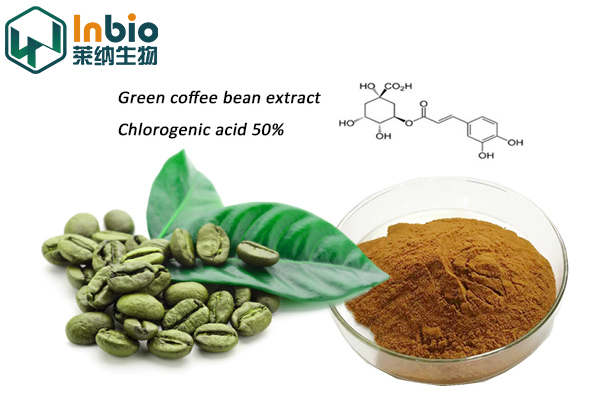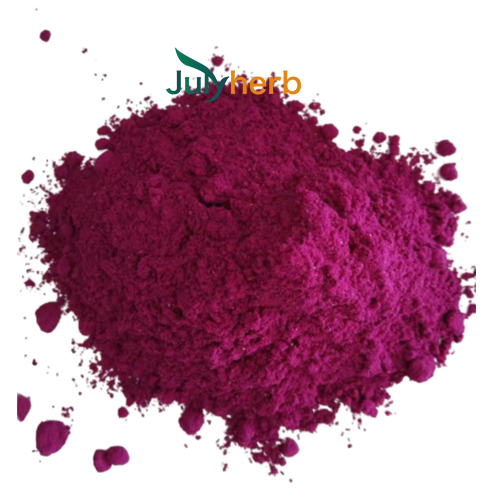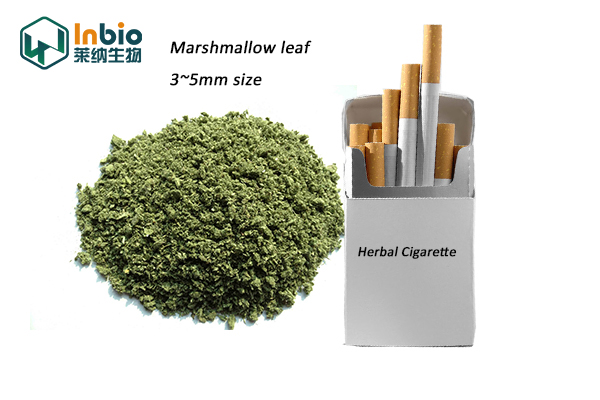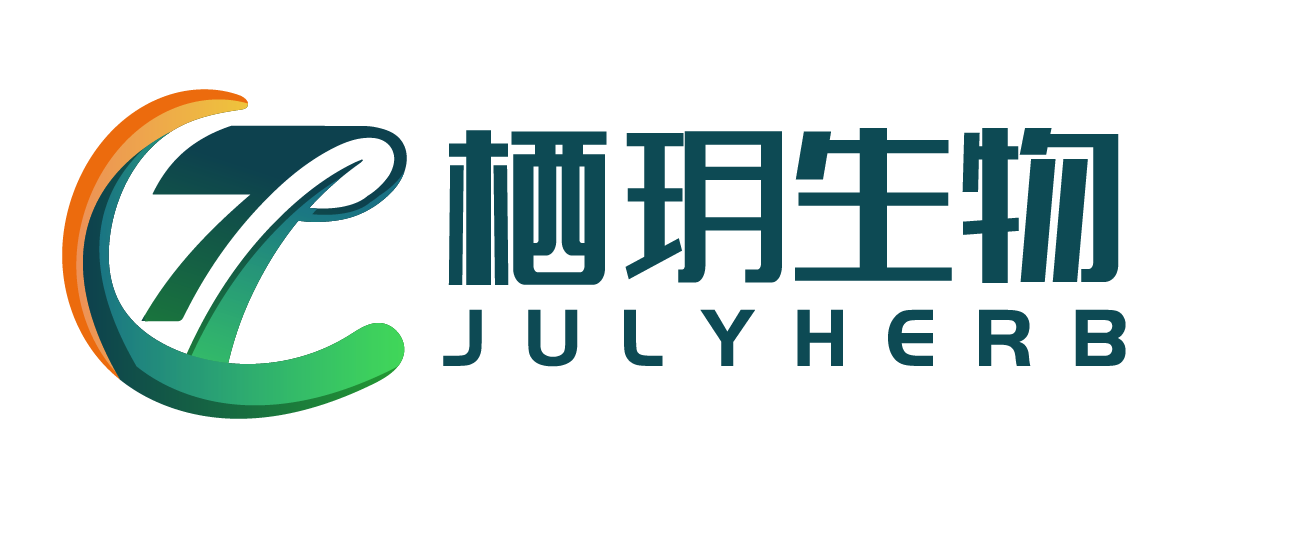
Green Coffee Bean Extract 25%~50% Chlorogenic Acid for Weight Loss
Green Coffee Bean Extract is sourced from Europe and is standardized to more than 99% Chlorogenic Acid. Chlorogenic Acid is the compound present in coffee.
Product Name: Green Coffee Bean Extract
Latin name: Coffea L. (Coffea robusta or Coffea arabica)
Plant part used: Coffea L. (Coffea robusta or Coffea arabica)
Specification: 10%,20%,25%,50%,98% Chlorogenic Acid
Testing methods: HPLC
CASNo: 327-97-9
Molecular Formula:C16H18O9
Mol. Wt. : 354.31
Main Function: Antioxidant, Anti-diabetes, Anti-tumor, Weight Reduction

Green Coffee Bean Extract:
Green Coffee Bean Extract is sourced from Europe and is standardized to more than 99% Chlorogenic Acid. Chlorogenic Acid is the compound present in coffee.
Which has been long known as for its beneficial properties. This active ingredient akes Green Coffee Bean an excellent agent to absorb free oxygen radicals; as well as helping to avert hydroxyl radicals, both which contribute to degradation of cells in the body.
Green Coffee Beans have strong polyphenols which act to help reduce free oxygen radicals in the body, but it is standardized to more than 99% Cholorgenic Acid, a dietary polyphenol that helps to regulate metabolism.
Health benefits:
Works in two ways as a powerful anti-oxidant reducing free oxygen radicals
Helps to regulate the body’s metabolism by inhibiting glucose 6 phosphate
Increases Stamina by stimulating the production of cortisone and adrenalin
Can increase the effectiveness of pain killers, especially for migraine medications
Can help to reduce the risk of diabetes, studies report 30% in women and over 50% in men
Helps the body burn a higher proportion of lipids to carbohydrates, which can help avoid muscle fatigue
More about Chlorogenic Acid:
Chlorogenic acid, an ester of caffeic acid and quinic acid, is a major phenolic compound in coffee, but is also found widespread in plants and can be isolated from the leaves and fruit This compound, long known as an antioxidant, also slows the release of glucose into the bloodstream after a meal.
Biological importance:
This acid is an important factor in plant metabolism. It is also an antioxidant and an inhibitor of the tumor promoting activity of phorbol esters; at concentrations as high as 100 µg/L, does not inhibit the 5-lipoxygenase activity of ionophore-stimulated human polymorphonuclear leukocytes.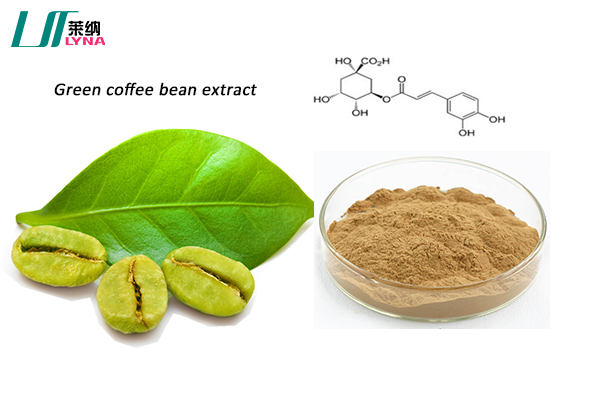
Chlorogenic acid and caffeic acid are antioxidants in vitro and might therefore contribute to the prevention of Type 2 Diabetes Mellitus and cardiovascular disease .
Chlorogenic acid is an important factor in plant metabolism. It is also an antioxidant and an inhibitor of the tumor promoting activity of phorbol esters.Chlorogenic acid, at concentrations as high as 100 um, does not inhibit the 5-lipoxygenase activity of ionophore-stimulated human polymorphonuclear leukocytes.
Chlorogenic acid, an ester of caffeic acid and quinic acid, is a major phenolic compound in coffee; daily intake in coffee drinkers is 0.5–1 g. Chlorogenic acid and caffeic acid are antioxidants in vitro and might therefore contribute to the prevention of cardiovascular disease.
Chlorogenic acid has been proven in animal studies in vitro to inhibit the hydrolysis of the glucose-6-phosphate enzyme in an irreversible fashion. This mechanism allows chlorogenic acid to reduce hepatic glycogenolysis (transformation of glycogen into glucose) and to reduce the absorption of new glucose. In addition, in vivo studies on animal subjects have demonstrated that the administration of chlorogenic acid lessens the hyperglycemic peak resulting from the glycogenolysis brought about by the administering of glucagen, a hyperglycemiant hormone. The studies also confirmed a reduction in blood glucose levels and an increase in the intrahepatic concentrations of glucose-6-phosphate and of glycogen.
Chlorogenic acid can be used as anti-infectious active ingredient, it has wide anti-virus, anti-bacteria effects, and has relatively lower toxicity and side-effects. It has obvious anti-infectious effects, and does not like to lead Anti-microbial Resistance.
Due to its obvious anti-infectious effects, it not only can be used in pharmaceutical field but can be used widely in many other fields like food, feed additives, cosmetics also.
